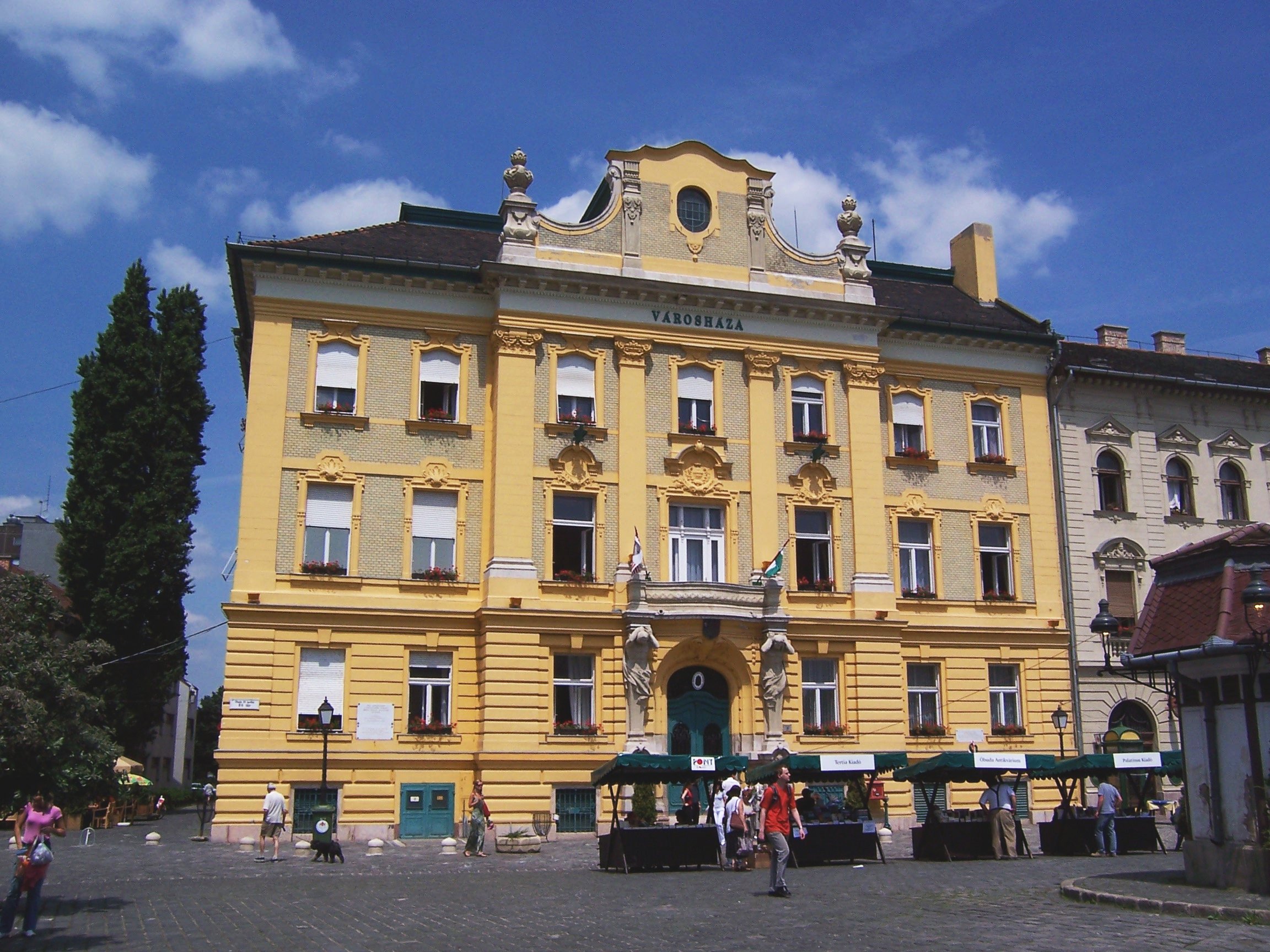Ă“buda on:
[Wikipedia]
[Google]
[Amazon]
 Ă“buda (, ) is, together with
Ă“buda (, ) is, together with
A Walk through Old Buda
{{DEFAULTSORT:Obuda Chabad communities Chabad in Europe Jewish communities in Hungary Roman settlements in Hungary
 Ă“buda (, ) is, together with
Ă“buda (, ) is, together with Buda
Buda (, ) is the part of Budapest, the capital city of Hungary, that lies on the western bank of the Danube. Historically, “Buda” referred only to the royal walled city on Castle Hill (), which was constructed by Béla IV between 1247 and ...
and Pest, one of the three cities that were unified to form the Hungarian capital city of Budapest
Budapest is the Capital city, capital and List of cities and towns of Hungary, most populous city of Hungary. It is the List of cities in the European Union by population within city limits, tenth-largest city in the European Union by popul ...
in 1873. Today, together with Békásmegyer, Óbuda forms a part of the city's third district, although the toponym is also sometimes used for northern Buda as a whole.
The neighborhood proper is centered on Fő tér beside the Szentlélek tér BHÉV station. Óbuda Island, which lies in the Danube
The Danube ( ; see also #Names and etymology, other names) is the List of rivers of Europe#Longest rivers, second-longest river in Europe, after the Volga in Russia. It flows through Central and Southeastern Europe, from the Black Forest sou ...
beside Ă“buda, hosts the Sziget Festival, a major annual music and cultural festival.
History
Settlements dating from theStone Age
The Stone Age was a broad prehistory, prehistoric period during which Rock (geology), stone was widely used to make stone tools with an edge, a point, or a percussion surface. The period lasted for roughly 3.4 million years and ended b ...
have been found in Ă“buda. The Romans built there Aquincum, the capital of Pannonia
Pannonia (, ) was a Roman province, province of the Roman Empire bounded on the north and east by the Danube, on the west by Noricum and upper Roman Italy, Italy, and on the southward by Dalmatia (Roman province), Dalmatia and upper Moesia. It ...
province. Hungarians arrived after 900 and it served as an important settlement of major tribal leaders, later kings. The site was the location of royal and ecclesiastic foundations. King Béla IV built a new capital after the 1241–42 catastrophic Mongol invasion in Buda, somewhat south of Óbuda. In the fourteenth century, Óbuda featured a convent of the Poor Clares.
The obscured historical remains of Ă“buda, together with the role it played in nineteenth-century poetry, has resulted it being subject to various historical disputes.
A commemorative plaque appears on the building erected on the site of the former Jewish Elementary School in Ă“buda (6 Ă“buda St.) commemorating victims of the Holocaust
The Holocaust (), known in Hebrew language, Hebrew as the (), was the genocide of History of the Jews in Europe, European Jews during World War II. From 1941 to 1945, Nazi Germany and Collaboration with Nazi Germany and Fascist Italy ...
.
People
* Károly Bebo (1712–1779) – sculptor * József Manes Österreicher (1759–1831) – physician * Moses Kunitz (1774–1837) – rabbi * Pál Harrer (1829–1914) – the first and only mayor of Óbuda * Egon Orowan (1902–1989) –physicist
A physicist is a scientist who specializes in the field of physics, which encompasses the interactions of matter and energy at all length and time scales in the physical universe. Physicists generally are interested in the root or ultimate cau ...
and metallurgist
* István Bibó (1911–1979) – politician and political theorist
Museums
*Aquincum Museum, small museum displays jewels, glassware, metal tools, and wall paintings relating to the lives of ancient Romans living in Aquincum. The museum's outdoor site contains remnants of the town, including courtyards, baths, a market place, shrines, large columns, sculptures, and a stone sarcophagus. Roman ruins elsewhere in Ă“buda include baths that served the Roman legionnaires stationed in Aquincum, the Hercules Villa, and twoamphitheatre
An amphitheatre (American English, U.S. English: amphitheater) is an open-air venue used for entertainment, performances, and sports. The term derives from the ancient Greek ('), from ('), meaning "on both sides" or "around" and ('), meani ...
s, the Aquincum Civil Amphitheater and the larger Aquincum Military Amphitheatre.
*Kassák Museum, a branch museum of the Petőfi Literary Museum; features items relating to the life and work of the Hungarian avant garde writer Lajos Kassák (1887–1967)
*Obudai Museum, primary collection features local history; the museum also encompasses Hungary's only toy museum, and the Zsigmond Kun Flat Museum, which features folk furniture
*Museum of Hungarian Trade and Tourism
*Vasarely Museum, Zichy Palace, features work by Vasarely, as well as temporary exhibitions of other Hungarian artists
Sport
* III. KerĂĽleti TVE, football team *33 FC
„33” Football Clubja was a Hungarian football club from the town of Óbuda, Budapest
Budapest is the Capital city, capital and List of cities and towns of Hungary, most populous city of Hungary. It is the List of cities in the Eur ...
, football team
References
External links
*A Walk through Old Buda
{{DEFAULTSORT:Obuda Chabad communities Chabad in Europe Jewish communities in Hungary Roman settlements in Hungary